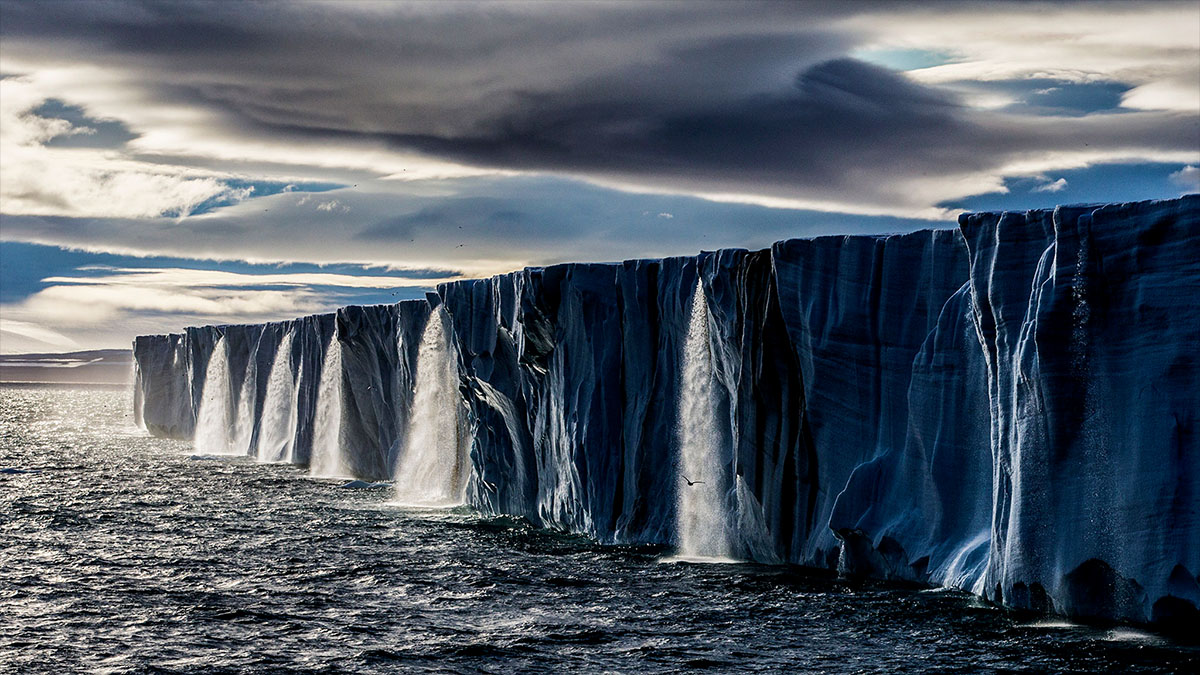can we really re-ice the arctic?

No matter what you may have heard otherwise, our planet is warming. And this problem has some very smart people thinking that if our politicians are too busy reading through their favorite soothing denialism and engaging in petty ideological squabbles to do anything useful, maybe humanity can just do what it does best and geoengineer the hell out of this problem. If we can heat up the planet, surely with enough heavy machinery we can cool it back down. Take the Arctic, that enormous sheet of ice at the top of the world, for example. Right now it’s slowly melting, but what if we were to pump water from just under the ice to freeze on top of the shelf? Just a tenth of the ice covered in wind turbines much like we use to generate power on farms and just slightly offshore, could stabilize the shelf and keep it from disappearing completely in the summer by the 2030s. But how realistic is that? Could we really pull it off? Is this even remotely realistic? And do we want to do it in the first place since there’s value in allowing a Northwest Passage to form as the ice keeps melting, from a purely economic standpoint?
First and foremost, let’s establish why the Arctic is melting and if this plan even has a shot at working. The primary culprit is the loss of multi-year ice, the ice that basically never melts and serves as a rock solid base for winter ice growth. Just 30 years ago, it made up at least half and as much as 60% of total ice shelf volume. Right now, it’s slipping below 15%, which means that whatever new ice forms during the winter just melts away, along with a small part of the shelf’s core. So with this in mind, increasing multi-year ice even a bit in the right places by adding on to it with cold water pumped to the surface by machines powered by windmills should expand the base for a new year’s worth of accumulations, and help regrow a solid chunk of the ice shelf. Or at least that’s the proposal in question. Unfortunately, the price tag for this plan is something like $50 billion, not including maintenance, which would make this a showstopper for any governments with the resources to fund it, not to mention that those governments are now headed by people in whose eyes global warming is some elaborate, evil conspiracy.
This is most unfortunate because this total is only a hundredth of the cost of doing business as usual, and that’s not including the cleanup costs of natural disasters slowly made more extreme by climate change, and mitigating risks from all of the potentially pandemic-causing viruses melting permafrost in the Northern hemisphere will release. Since we know that simply trying to tax our way to a cleaner future is not going to work, it does make sense that scientists desperate to see some positive initiatives to at least slow down the damage to the environment would resort to geoengineering proposals, and in the grand scheme of things, this plan is actually quite cost-effective and is bound to save trillions over the coming decades if it works, as well as create thousands of green jobs. It even has that sci-fi quality to it; working in rough conditions, rushing against time to save the world from itself. It just needs a better antagonist than a group of oligarchic politicians who rush to kowtow to greedy old geezers who think climatology is a communist scam. But there are some hitches to consider even with a favorable view of this plan.
While none of the technology on which this idea relies is in any way new or untested, how it’s used has ever been tried before so before we ever decided to go full scale with it, we’d need to do a small test. One could also argue for a multi-year experiment to shed some light on long term effects, but the sad fact is that we wouldn’t have much time to study long term implications. To save multi-year ice in the Arctic, we have to have some ice still left, and if we wait a decade, there may be too little left to successfully regrow without at least doubling, if not tripling, the scale of this plan. With even a lowest end estimates firmly placing the funding this program within the realm of nation states, it’s going to be tough even for the greenest politicians to cough up all those billions for anything other than a war. Plus, if we’re geoengineering, it seems likely that we’d want to do it creatively and allow for the long sought Northwest passage to finally melt enough to be reliably traversable. And who knows what other geoengineering requests that might spawn…





